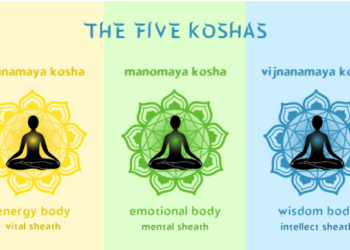Do you know the total number of Vedas and Upa-Vedas in Hinduism? Before, we dwell in that, what exactly are Vedas and Upa-Vedas? The Vedas are one of the oldest, if not the oldest, religious texts to exist. They are the book of knowledge. And they consist of everything necessary to guide the world. At the same time, Upa-Veda designates the four technical disciples. So, now would you like to know more about the number of Vedas and Upavedas in Hinduism?
Number of Vedas
The number of Vedas are four and they are:
- Rig Veda – Rig Veda is a hymn of praise. It is the oldest book known to humanity and one of the precious collections of knowledge. Further divided into ten books called the mandalas. And it has 1028 hymns in praise of deities.
- Yajur Veda – the Yajur-Veda consist of particular directions and formulas to prepare and perform rituals and ceremonies. It further consists of two sections, the earlier ‘black’ and the ‘white.’ The Yajurveda contains the lines with the priest accompanying his ritual activities.
- Sama Veda – The third among the four number of Vedas in Hinduism is Sama Veda. It includes the chants and melodies. In addition, we sing it during worship and yajna’s performance. It contains about a thousand and nine hundred words, all taken, more or less from the Rig Veda. Sama Veda represents the mind and heaven.
- Atharva Veda – Atharva-Veda includes magical formulas and tantrika. It also has other forms of esoteric knowledge that helped pave the way for modern science in India. Atharva-Veda is even sometimes called ‘Veda of Magical Formulas.” It is a collection of 20 books containing hymns, chants, spells, and prayers.
Number of Sections in Vedas
The number of Vedas are four and each of them are further divided into three sections:
- The Samhita – They are the most ancient part of Vedas. They consist of hymns and mantras in praise of Vaidika deities. The priests use the Yajur Veda as the handbook for Vedic sacrifices. The Sama Veda consists of chants and tunes for singing at the sacrifices. Atharva Veda Samhita includes even the pre-date Aryan influence and consists of spells and charms
- Brahmanas – the Brahmanas are the ritualistic portion dealing with the methodology of performing Vaidika rituals. They represent a digest of accumulated teachings, illustrated by myth and legend, on various sacred texts’ different traditions and hidden meanings.
- Aranyakas – They are the contemplative portion, which includes the Upanisads. But the literal meaning of ‘Aranya’ is forest. The Aranyaka texts are so-called because men read them in the woods’.
Upa-Vedas
The Upavedas altogether address the various aspects of health, security, aesthetics, and culture required for civilization. Just like the number of Vedas, the Upa-Vedas are also divided into four parts: –
- Rig-Veda: Ayurveda – it is the science of medicine and health.
- Yajur-Veda: Dhanurveda – It is the science of weaponry. Dhanurveda itself derives its name from the words dhanushya (bow) and Veda (knowledge). It consists of chants to empower weapons as the divinity of the weapon is an integral part of the faith of a warrior.
- Sama-Veda: Gandharveda – Gandharvaveda is the art and science of music. It refers to the highest experience of aesthetic bliss. In Hinduism, we consider all art, literature, music, and dance sacred. Hence, we use it for the evolution of the soul and emotional refinement.
- Atharva-Veda: Sthapatyaveda – it refers to the science of mechanics and construction. It is also known as Shilpa Veda. The name Sthaypathya means ‘establishing,’ and Veda, as we all know, means ‘knowledge.’ Sthapatyaveda links itself with the diety Viswakarma. It includes science and construction, smithy and metallurgy, civil engineering, and textiles.








